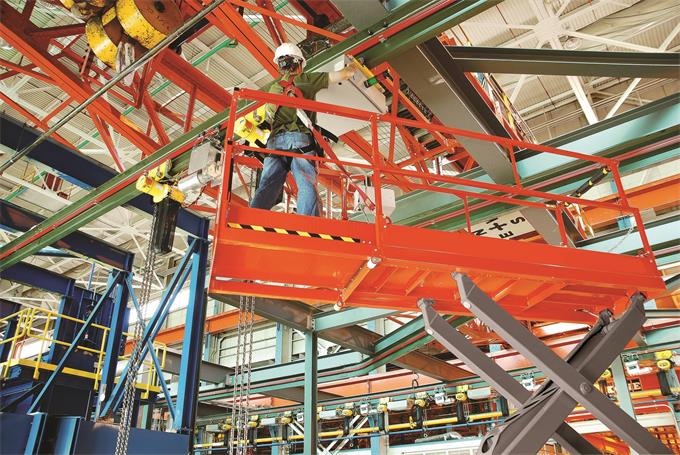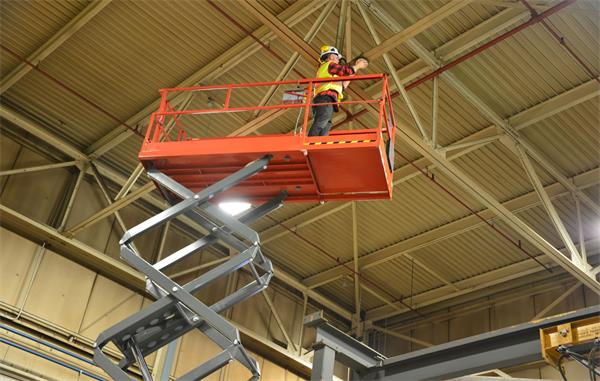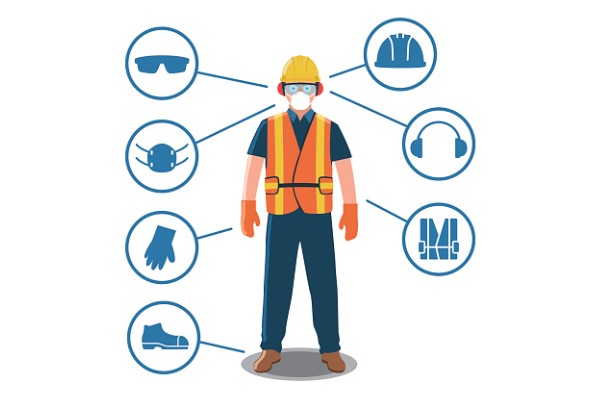I. What are self-propelled scissor lifts used for?

Self-propelled scissor lifts are versatile and valuable and widely used in various industries. These lifts provide elevated platforms that can be maneuvered vertically using scissor-like mechanisms. They are designed to safely elevate workers, tools, and materials to different heights, facilitating tasks at elevated levels.
The owners and workers use self-propelled scissor lifts to improve efficiency, productivity, and safety in a range of industries. Construction sites rely on these lifts for tasks such as installation, maintenance, and repair work at height. In the warehousing and logistics industry, scissor lifts enable efficient stacking and retrieval of goods from high shelves. Maintenance crews utilize them to access elevated areas for equipment servicing. Even in film production, scissor lifts assist with camera positioning and lighting setups.
These lifts offer a stable working platform, enhanced mobility, and precise height adjustment capabilities, making them indispensable in numerous applications. They reduce the reliance on ladders or scaffolding, minimizing the risk of falls and accidents. By providing secure and flexible access to elevated areas, self-propelled scissor lifts contribute to improved operational efficiency, increased productivity, and enhanced worker safety across various industries.
II. What is a Self-Propelled Scissor Lift?

A self-propelled scissor lift is a type of elevated work platform that features a scissor-like mechanism for vertical movement. Other scissor lifts require external power sources or manual effort to move, while self-propelled scissor lifts are equipped with an integrated propulsion system. This enables them to move and position themselves without needing additional equipment or assistance.
The main components of a self-propelled scissor lift include a platform or workspace, an extending base with wheels or tracks, an electric, diesel, or hybrid power source, and a scissor-like mechanism. The scissor mechanism consists of linked supports that extend and retract vertically, allowing the platform to elevate or descend smoothly.
Self-propelled scissor lifts typically have controls located on the platform for the operator to adjust the height and movement. These controls enable precise positioning and maneuvering, providing flexibility in reaching desired working heights and accessing confined areas. The lifts may also include safety features such as guardrails, emergency stop buttons, and sensors to detect potential hazards.
With their self-propulsion capabilities, these scissor lifts offer increased mobility and efficiency compared to manually operated or externally towed lifts. The operator can drive and position them as needed, reducing the time and effort required to transport them around work sites. The integration of propulsion systems enables smooth and controlled movement, enhancing productivity and user convenience.
III. What are scissor lifts used for?

Scissor lifts are crucial in various industries, offering versatile and efficient solutions for elevated work. Here are some primary use cases of scissor lifts in different industries:
Construction: Scissor lifts are widely used in construction for tasks such as installation, maintenance, and repair work at height. They provide a stable and secure platform for workers to access elevated areas, increasing safety and efficiency. Construction crews utilize scissor lifts for electrical work, painting, window installation, and facade maintenance.
Maintenance and Facilities: Scissor lifts are essential for maintenance work in warehouses, manufacturing plants, and large buildings. They enable technicians and maintenance teams to reach elevated equipment, lights, ductwork, and other components safely. These lifts facilitate regular inspections, repairs, and routine maintenance tasks.
Warehousing and Logistics: In the warehousing industry, scissor lifts assist with the stacking and retrieval of goods from high shelves. They allow workers to efficiently load and unload items without relying solely on ladders or manual lifting. Scissor lifts improve inventory management and streamline operations in distribution centers, ensuring optimal use of vertical space.
Film Production: Scissor lifts are commonly used in film sets and entertainment industries. They provide stable platforms for camera positioning, allowing cinematographers to capture shots from unique angles and heights. Lighting technicians also utilize scissor lifts to set up and adjust lighting rigs to achieve desired effects.
Event Management: Scissor lifts find applications in event management for tasks like stage setup, rigging, and signage installation. They offer a safe and flexible solution for accessing high points in event venues, simplifying the process of creating engaging and visually appealing setups.
Retail and Display: Scissor lifts help create eye-catching displays in retail environments by allowing easy access to ceiling-mounted fixtures, signage, and decorations. They enable efficient store layout changes, preventing the need for expensive and time-consuming scaffolding.
Overall, scissor lifts provide a reliable and efficient means of working at high across various industries. They make it easy to elevate workers, equipment, and materials, which enhances productivity and improves safety.
IV. Maintenance and Training for Self-Propelled Scissor Lifts

A. Routine Maintenance:
Regular maintenance is crucial for the safe and optimal performance of self-propelled scissor lifts. Consider the following:
Inspections: Conduct routine checks to identify any damaged or worn-out components, loose connections, or other potential issues. Inspect the lift's structural integrity, hydraulic systems, electrical components, and safety features regularly.
Lubrication: Proper lubrication of moving parts is essential to minimize friction and ensure smooth operation. Follow the manufacturer's guidelines to lubricate components such as pivot points, hinges, and lift arms.
Component Replacements: Replace worn or damaged components promptly to maintain the lift's reliability and safety. Use genuine parts recommended by the manufacturer to ensure compatibility and quality.
Manufacturer's Maintenance Schedule: Adhere to the maintenance schedule provided by the manufacturer. It specifies the intervals for different maintenance tasks, including inspections, fluid checks, filter replacements, and overall servicing.
B. Operator Training and Certification:
Operator training and certification are crucial for the safe and efficient operation of self-propelled scissor lifts. Consider the following:
Significance of Training: Proper operator training reduces the risk of accidents, improves productivity, and extends the lifespan of the equipment. It ensures operators understand the controls, safety procedures, and best practices for operating the scissor lift.
Certification Programs: Encourage operators to participate in certified training programs specifically designed for scissor lifts. These programs cover topics such as equipment operation, safety guidelines, hazard identification, and emergency procedures.
Equipment-Specific Knowledge: Familiarize operators with the specific scissor lift model they will be using. Provide them with equipment manuals, manufacturer's guidelines, and resources that offer detailed information on the lift's operation, maintenance, and troubleshooting.
By prioritizing routine maintenance and providing comprehensive operator training, you can enhance the safety, efficiency, and longevity of self-propelled scissor lifts in your workplace.
V. Conclusion

In conclusion, self-propelled scissor lifts are incredibly versatile and play a crucial role in a wide range of industries. Throughout this article, we have explored the applications of self-propelled scissor lifts, the installation process of these lifts and highlighted the importance of ensuring safe and efficient operation.
In various industries, self-propelled scissor lifts have proven to be invaluable assets. They improve accessibility and efficiency, reduce labor-intensive tasks, and enhance overall productivity. From construction sites to warehouses, from facility maintenance to event management, the impact of scissor lifts cannot be understated.
As you embrace the versatility and benefits of self-propelled scissor lifts, remember to prioritize safety, follow proper installation procedures, and adhere to maintenance and operational guidelines. By doing so, you can harness the full potential of scissor lifts and create a safer, more efficient working environment.
Celebrate the advantages they bring to your industry and seize the opportunities for increased productivity and success with self-propelled scissor lifts.
Оставить комментарий
Ваш электронный адрес не будет опубликован. Обязательные поля помечены *
Вам также может понравиться
+8619963481610
Дорога Шунь Тай Бэй, район Личэн, Цзинань, Китай
Copyright © Wemet Lift Machinery Co., Ltd. Все права защищены | Карта сайта Техническая поддержка: 